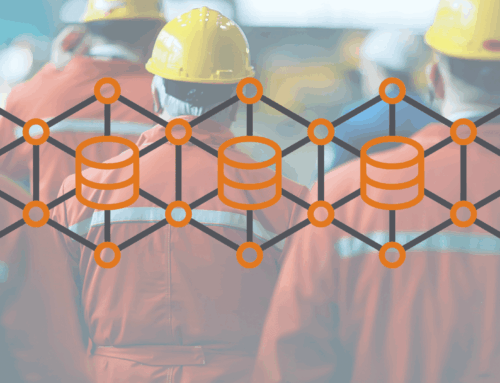At the start of each new year, people around the world resolve to make some beneficial change in their lives. Many people promise to improve their health through either diet or exercise. Others may set out to learn a new skill, take better control of their finances, travel, or adopt a new hobby.
Whatever the cause, the goal is universally about making improvements in our lives. Unfortunately, many of us will set out to accomplish goals that are either too lofty or too unspecified, and about 80 percent of resolutions will be abandoned by February.
Likewise, the beginning of the year is also a good time for organizations to put resolutions in place that will improve operations, reduce costs, or lessen the risk of failures and subsequent downtime. And like the millions of personal resolutions set forth each year, it is best if company goals are well defined and within reach. With that in mind, here are five resolutions for your organization related to actionable intelligence that are attainable with the right support and tools and can transform your operations.
Actionable Intelligence Resolutions
Spend Less, Save More
Operation and maintenance costs are a part of life, but many enterprises are being asked to do more with less. Though useful, corrective and preventative maintenance can be costly, as you may be doing one of two things: 1. waiting for a failure to happen, or 2. replacing or taking action on a piece of equipment that may not even require attention.
By instituting a predictive maintenance strategy, your operations center receives early warnings of potential and hidden failures, increasing your lead time to plan and implement. This saves you time but also reduces your operations and maintenance costs through actionable intelligence. It also broadens your maintenance strategy. Using advanced techniques that take advantage of your data will improve overall operations and, in turn, improve efficiency and optimize your decision-making.
Adding a predictive maintenance (PdM) tool element to your strategy does not require a heavy investment on your part. Avoiding just a single failure can easily cover the cost of the software. That being said, a predictive analytics solution will catch more than just one failure and save you from many unplanned shutdowns in the future.
Get into Shape
In the coming years, businesses will only see an increase in the amount of data heaved onto their reports. However, beefing up spreadsheets with more data is not useful by itself. When you transform data into actionable intelligence, it becomes one of the most valuable assets in your operation. To accomplish such a level of intelligence, you will need a better understanding of your data: What is it measuring? How can it be accessed consistently and easily?
Start with a survey of the data you currently collect. Where is it accessible? How do you manage it? If you don’t collect data (either in whole or in part), is it because you need to add sensors, or do you lack a way to store the data properly?
When it comes to accessibility, data shouldn’t be siloed either by location or access. If your systems require an operator to physically be at a specific computer in a specific room to access information, then you won’t be able to utilize your data to its fullest potential.
Data management can have similar challenges. From the site to the enterprise level, there are often numerous layers of data storage and data management. Streamline this process as much as possible. Just because a solution is complicated doesn’t mean it’s the best. Also, consider reviewing the data details. A sensor name and description that uses random numbers and characters is not going to be helpful in an emergency. Plus, it’s just plain annoying in everyday operations. Start early with a naming and description convention that is logical and remains consistent. Everyone will thank you later when they don’t have a sensor name of 23455.
Get Organized
It is usually more difficult to go back and accurately recreate information than to create it as it happens initially. No one wants to spend their day being a historian, but maintaining records and information now can save time, money, and headaches in the future.
For example, keep a record of when failures occur. Circumstances dictate that you take the necessary actions to rectify the situation. Data can tell how your equipment is currently operating, and history knows how it should be operating. If you don’t keep historical records, you will miss opportunities to make improvements in your operation.
Similarly, these records become a knowledge base for your employees. All industries are managing an aging workforce and a revolving workforce. Don’t lose equipment knowledge because a person has retired, is out sick, or has left the company. Having tools that allow employees to transfer knowledge is critical. It doesn’t have to be a complicated system, just one that records what happened and what steps were taken to fix the issue. Such history can expedite recovery significantly when an alarm is activated, and operators can quickly see how similar problems were solved in the past. Also, you don’t want the recall of this information to take time. If it’s already in the system, you shouldn’t have to waste valuable time figuring out how to track down past accounts.
Spend More Time Outside
As stated before, actionable intelligence should be readily available anytime and anywhere. Don’t silo your historical and real-time data for any piece of equipment. There should not be one person on one computer in one room with access to the operational data.
By constructing a centralized location for your data, you and all layers of the organization can access and analyze data throughout the enterprise. Necessary personnel can analyze an individual piece of equipment all the way to the entire fleet, providing needed actionable intelligence.
Web and mobile applications enable you to be anywhere and still know what is happening at the site. By removing the obstacles of access and creating ease of use, you can use data more in the decision-making process, improving operations and optimizing actions. Data is not meant to be locked away; it is intended to be usable and actionable. Data security is vital, so have a data management solution that allows you to access and analyze all your data through a centralized data management system and provides the necessary data and system security.
Learn Something New
There’s plenty of buzz about AI, IoT, and machine learning, but what do these words mean for you? At their core, these technologies exist to improve your process and operations. When learning about these new types of technology and techniques, always ask, “How will this provide real value to my current operations?” Technology is great, but no one needs technology for technology’s sake.
There are solutions available that use unsupervised machine learning to help users come closer to achieving operational excellence. How? By reducing operations and management costs and improving efficiency. Though the tools may be new, the concepts are not. When learning about these new tools, always keep in mind that the most important thing is the results, which haven’t changed.
Check out our LinkedIn and share 5 resolutions! Reach out to our solution experts to start transforming your operations and improving efficiency this year.






